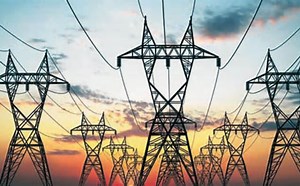According to the World Bank, $13.3 billion in total capital expenditure would be needed to provide universal power access in four Pakistani provinces. According to the Bank’s most recent research, “Pakistan Least-Cost Electrification Study,” Pakistan would need to service over 40 million total electrical connections in order to attain universal access to electricity by 2030.
Population growth and individuals who do not already have a formal power connection are factors in the demand to expand the number of electricity connections. Potential clients who are 500 meters or less from the current distribution grid make up one category of the new connections, while those who are farther out fall into the other. For 53% of Pakistanis without access to energy, grid densification is the least expensive solution.
Grid densification would be the most economical option for clients who are 500 meters or less from the current distribution grid. This entails fortifying and expanding the existing grid infrastructure. Using geographic analysis and customer count data from the energy distribution companies (DISCOs), the geospatial analysis finds households in this category that are not yet electrified. It’s possible that some of these homes now have unofficial electrical connections; in order to bring them into the formal system and lower business losses, they would need to be included in the grid densification initiatives.
Grid extension is the most common choice for the 9.3 million new connections that are situated more than 500 meters away from the current grid infrastructure. Off-grid options like minigrids and standalone solar household systems are the next most popular options. Grid extension is the process of installing new poles, wires, transformers, and customer connections in the target settlements in order to extend the grid to new places that are currently more than 500 meters from the existing grid. Grid extension is estimated to be the least expensive option for 25% of all new connections needed and 53% of new connections needed beyond 500 meters from the present grid, offering an affordable way to increase connectivity.
Mini-grids and standalone solar home systems seem to be the most affordable option in situations when the required distances are unaffordable or in areas with significantly lower population densities. For twenty percent of the additional connections needed, mini-grids seem to be the most cost-effective option. They are particularly crucial for supplying energy to the province of KP.
According to the World Bank, $13.3 billion in total capital expenditure would be needed to provide universal power access in four Pakistani provinces.
According to the Bank’s most recent research, “Pakistan Least-Cost Electrification Study,” Pakistan would need to service over 40 million total electrical connections in order to attain universal access to electricity by 2030.
Population growth and individuals who do not already have a formal power connection are factors in the demand to expand the number of electricity connections. Potential clients who are 500 meters or less from the current distribution grid make up one category of the new connections, while those who are farther out fall into the other. For 53% of Pakistanis without access to energy, grid densification is the least expensive solution.
Grid densification would be the most economical option for clients who are 500 meters or less from the current distribution grid. This entails fortifying and expanding the existing grid infrastructure. Using geographic analysis and customer count data from the energy distribution companies (DISCOs), the geospatial analysis finds households in this category that are not yet electrified. It’s possible that some of these homes now have unofficial electrical connections; in order to bring them into the formal system and lower business losses, they would need to be included in the grid densification initiatives.
Grid extension is the most common choice for the 9.3 million new connections that are situated more than 500 meters away from the current grid infrastructure. Off-grid options like minigrids and standalone solar household systems are the next most popular options. Grid extension is the process of installing new poles, wires, transformers, and customer connections in the target settlements in order to extend the grid to new places that are currently more than 500 meters from the existing grid. Grid extension is estimated to be the least expensive option for 25% of all new connections needed and 53% of new connections needed beyond 500 meters from the present grid, offering an affordable way to increase connectivity.
Mini-grids and standalone solar home systems seem to be the most affordable option in situations when the required distances are unaffordable or in areas with significantly lower population densities. For twenty percent of the additional connections needed, mini-grids seem to be the most cost-effective option. They are particularly crucial for supplying energy to the province of KP.
of mini-grid business models and technology in other nations, establishing mini-grids as a feasible route to superior power availability in more remote areas with comparatively dense populations. KP province would need 2.1 million mini-grid connections out of the 3.9 million total necessary by 2030, from a relatively low base, because of its topography and demographics. Micro hydropower and wind power are potential sources for Pakistani mini-grids, but solar power is expected to account for the majority of them.
